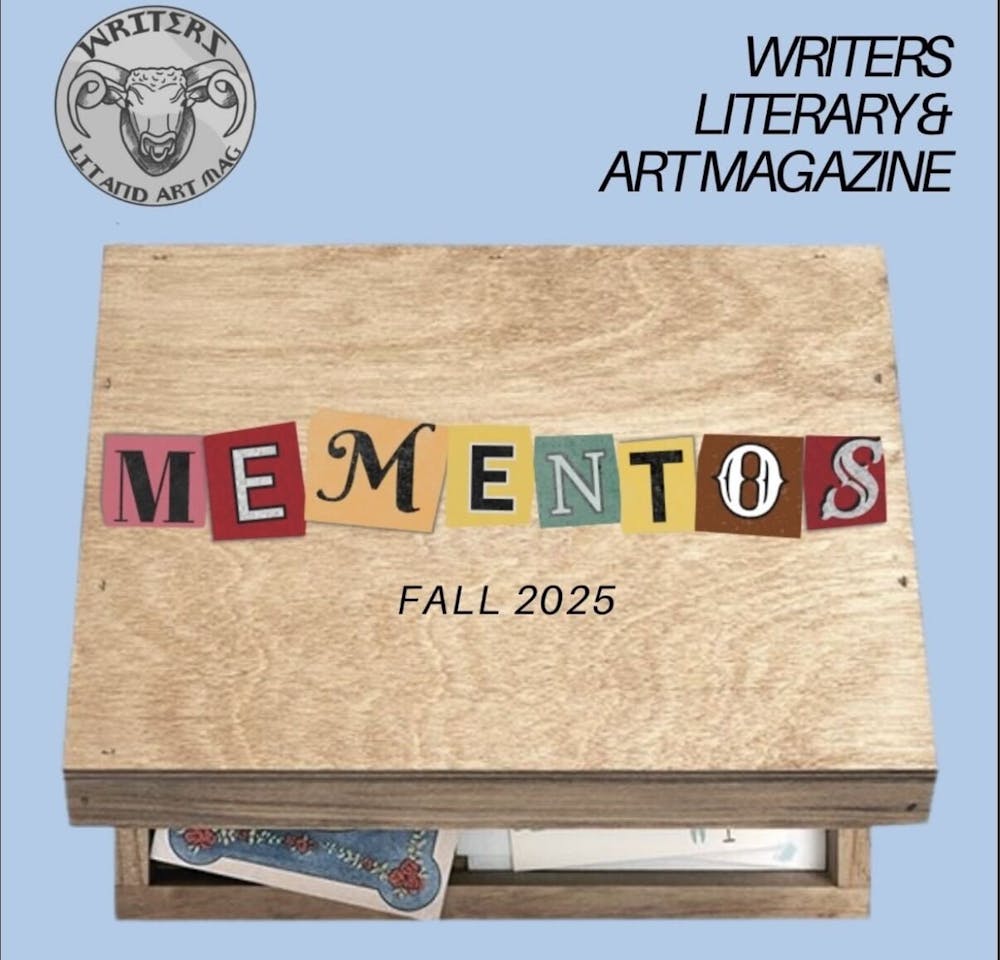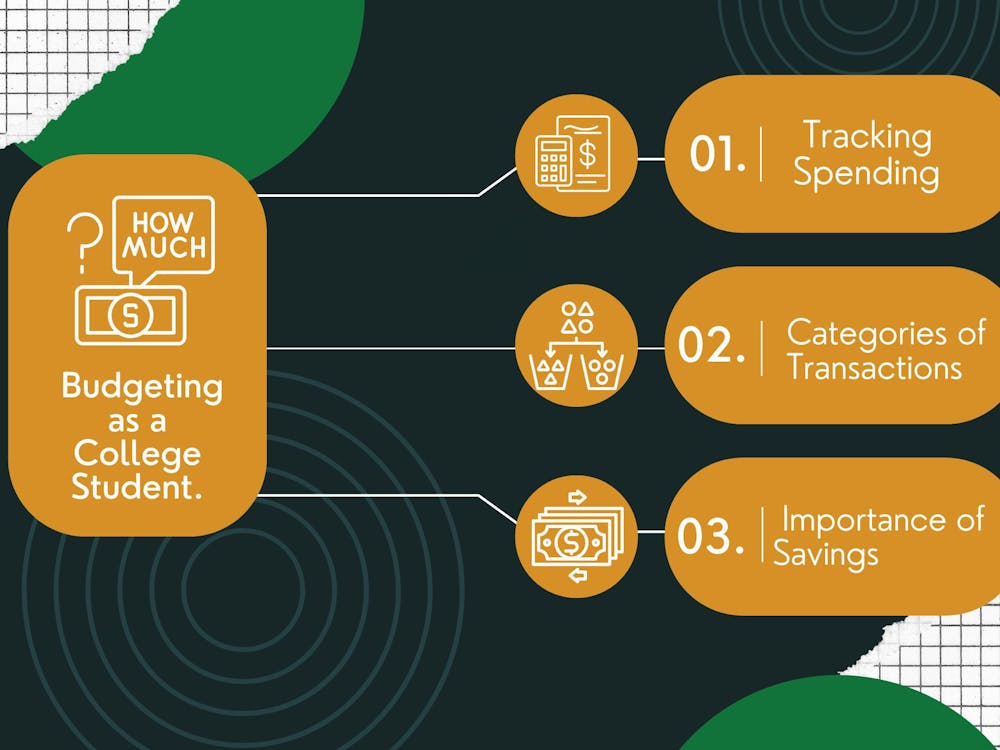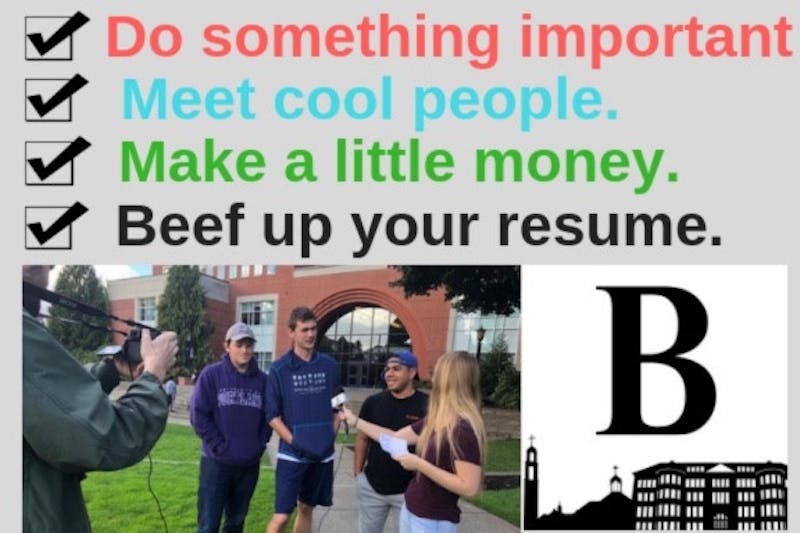Editor’s Note: Responses have been edited for clarity and concision.
Whether it's Labubus or childhood stuffed animals, seemingly silly toys can have meaning for their owners.
To celebrate these beloved items and more, Writers Magazine is preparing for its fall issue, “Mementos.” In this issue, students can highlight keepsakes that remind people of the homes, memories and values they hold near to their hearts, according to Writers Magazine Senior Editor Clara Smith.
With faculty guidance from the English department, nine student editors construct the magazine from student submissions, which include visual art, poetry and prose.
These submissions remain anonymous to editors throughout the selection process until the magazine is published. The submission deadline for the fall issue is Oct. 31. Students can submit to the magazine through the Writers’ website or Instagram.
The Beacon spoke with Smith on behalf of the Writers Magazine to reveal the internal cogs of the beloved magazine, as well as her experience on the editorial board.
The Beacon:
“How did Writers Magazine start?”
Clara Smith:
“It started when it was called the Dedalus, when UP was just for men. Since then, it's gone through many different changes. But it's been Writers Magazine for a couple of decades now. It's always been affiliated with the English department.”
The Beacon:
“What does submitting look like for students?”
Clara Smith:
“From the student side, you are open to submit up to six pieces per edition. And it's six because we split three and three – three visual pieces and three writing submissions. We love to emphasize visual art. It can be paintings, sketches or comic strips. We take anything visual that you can imagine. Then three literary works, and that's prose, poetry, short stories and plays.”
The Beacon:
“What is the process for selecting pieces to be featured in the magazine?”
Clara Smith:
“All of our editors, a team of nine right now, are tasked with scoring the pieces on their own time. We score through a point system. It's a score up to five, five being the best, meaning you're automatically going to be in [the issue] because it's a perfect score, and then as low as zero. We all meet over brunch, in one of the editor’s houses, where we ask everyone … to talk about [the pieces] there. In person is where we do the bulk of that work, after we've looked at our scores. We average them, we look at which ones we ranked the highest. ... Those selection brunches are our most important, crucial meetings. It’s the one time where we meet and talk about it all together and have a little creative process moment.”
The Beacon:
“What’s the point of the submissions [process] being anonymous?”
Clara Smith:
“As an organization, we are student-run, and student art is what's happening. And because we're such a small school, I think that it's important that it is anonymous because of that aspect of, ‘Oh, my God, I'm sending my work out to be rejected or accepted somewhere. I'm gonna throw up. This is horrifying.’ I think [the anonymity] takes that edge off for people. Sharing your art is so vulnerable. It's such a big ask. I think the anonymous factor is the draw, and with such vulnerable pieces of these students' lives, it is so important that we're also being peers as well. We're the same. Our editors are also students. There's fear of judgment [but] we always want it to be a safe creative space.”
The Beacon:
“Why should students submit to the Writers Magazine?”
Clara Smith:
“We want to amplify student art and student voices. In a time where there is so much cringiness on vulnerability and art and writing in general, we want to keep this tradition going and have it always be this little cornerstone for student voices. I think it's so important, especially in our political climate, to have this outlet where people can be more free in their voice, and you can uncensor yourself, and you can write your deepest and darkest thoughts, or write your silliest thoughts. When I ask people when we're tabling at the activities fair, ‘Do you make art, or do you take photos?’ And people often say, ‘No, I don't, I'm the opposite of artistically inclined.’ We often say, ‘Well, I feel like you have a notes app where you write things. We'll take those too.’ Or we say, 'You have an iPhone where you take pictures and you probably post them somewhere on Instagram.’ We take any form of photography, whether you think it is trash and silly or low pixel. We as humans often think, you have to be a certain thing to be accepted in those spaces. But really, [the magazine is] a space for all people.”
The Beacon:
“How many submissions are taken for the fall and the spring semester editions?”
Clara Smith:
“For the fall, we take 30 pieces in total. It's been as small as 20 sometimes and as big as 30. It is often 15 written, 15 visual, [though] that definitely changes with the magazine in the fall being online. Then, [there are] generally 60 pieces in the spring. The pairing process of [visual and written] is very crucial. There's not always consistency. Sometimes there's not a lot of written pieces versus getting a lot more artwork than we expected. So that changes, it’s not very strict.”
The Beacon:
“How are themes for the issues decided?”
Clara Smith:
“It's definitely the hardest thing, because it's whatever our team of editors at that time comes up with. We compile a list of potential themes, and it's a group vote. We'll pick four of our favorites, and then we'll vote between those four. A lot of democracy goes into it, and it definitely has a lot to do with thinking about what students might be interested in and what's going on in the world.”
The Beacon:
“What inspires you the most about working with Writers Magazine?”
Clara Smith:
“There are so many different authors and people, but honestly, what inspires me is the English faculty on this campus. Whether it's our faculty advisor, John McDonald, or the head of the English department, Joshua Swidzinski. John McDonald, specifically, is just the most inspiring person ever. I met him through classes, but now, I work with him closely being an editor. The support that we get from John McDonald and the English faculty who come to our events and comment on our Instagram, that faculty-student relationship has been really, really inspiring. You get to talk with them about art and be reminded, ‘Oh, you're an artist too.’ Or, ‘You really care about poetry or music or art in this way [as well].’”
The Beacon:
“What’s something you’ve learned while working with Writers Magazine?”
Clara Smith:
“Ultimately, one of the most important things that I've learned is how important community and conversation are. I think, often, when we are reading stuff, whether it's news or something for class or text messages from your mom, … we're so often in our heads. We are thinking about the things going on in our lives, and then responding to them and feeling a certain way about it. But then, when you get in these creative spaces, we can reflect on that and have some critical discussion about them. It doesn't have to be scary, and it can be super open-minded. We can be talking about serious and important things, but these conversations can still have that light-hearted acceptance of it.”
Emily Friesen is a reporter for The Beacon. She can be reached at efriesen28@up.edu.








